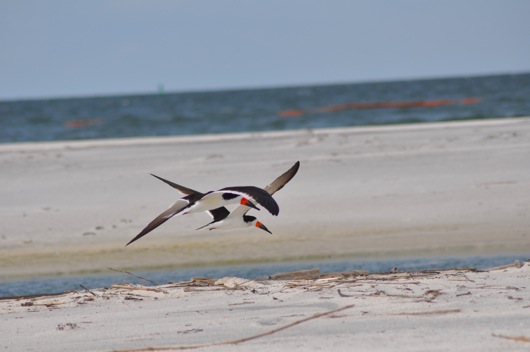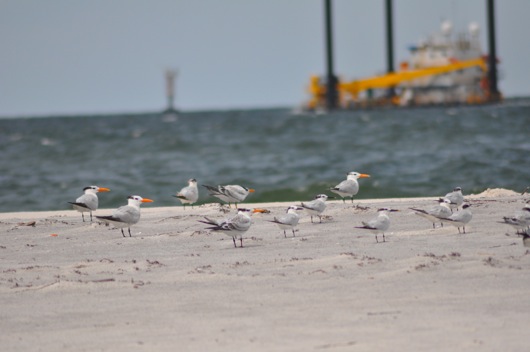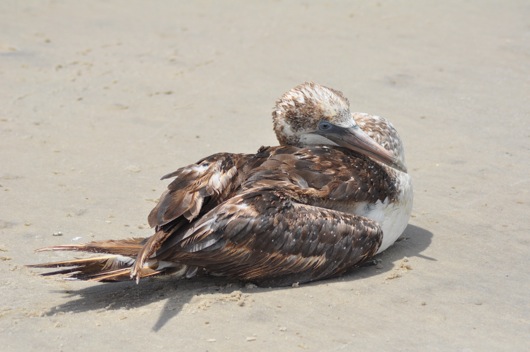A Tale of Two Beaches
My colleagues on PDX 2 Gulf Coast have described in stark terms the surreal scene on the seven miles of beach at Grand Isle, Louisiana. Miles of beach have been trucked to a giant “washing machine” where oil contaminated sand has literally been subjected to a wash/rinse cycle and re-deposited in giant piles and reapplied to the beach. The result is a sanitized, plowed, leveled beach devoid of nutrients for migrating shorebirds and an other worldly flattened landscape. I went for a run on Grand Isle’s beach and it was like plodding through a disked and plowed Iowa cornfield. Few birds inhabited what was a raped, forlorn, flattened and desolate strand.
Several days later we visited Ship Island, part of the National Park Service’s National Seashore off Gulf Port, Mississippi. After an hour-long excursion on the passenger ferry to West Ship Island I decided to split from the group and walk to the west end of the island, away from what we learned was the most likely place to find tar balls and oil slicks to the east. What I experienced was a sharp contrast to what I had previously observed on Grand Isle. While oil booms bobbed in the surf, there was significant topographic relief. Beach grasses, drifting sand and woody debris offered nesting birds ample nesting and foraging habitat for seabirds. As I walked west I encountered large colonies of black skimmers and royal terns. Along the shore a diverse avifauna wandered along the beach probing for food. Red flags demarked an area off limits to intrusion to protect the large nesting colonies.
As I rounded the western end of the island and headed back east on the island’s south shore, thousands of skimmers and terns were resting a few hundred feet inland. The south shore, too, had willets, semi-palmated plovers, sandpipers, and turnstones plying the waterline for food. As I walked farther east I entered the recreational zone with life guards, volleyball nets, and families enjoying the surf. Mothers strolled along the beach with children in tow. Two talkative young girls we met on the ferry came running up to me to share their catch of the day, snared in their dip nets.
Just beyond the knot of people enjoying a dip in the Gulf on what was a hot and humid day the birds thinned out to a couple Skimmers and a single Willett. Soon I came to several large tarballs, thick gooey globs of oil that had congealed and washed up on the beach. Nearby was a sick, dying young gannett.
Was the gannett sick from the oil spill? Young birds die all the time of “natural causes.” Still, the fact that all the avian activity was on the west end of West Ship Island and not toward the east where we had been warned the winds had blown the Gulf oil spill was in my mind as I retraced my steps back to the ferry landing.
Full photo gallery of Ship Island here.
By Mike Houck, Director Urban Greenspaces Institute


























NO COMMENT
Leave a comment